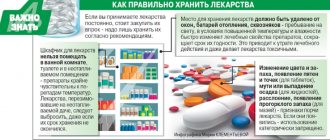Betahistine Canon (8mg, 16mg; 24mg)
Pharmacodynamics
The mechanism of action of betahistine is only partially known. There are several possible hypotheses supported by preclinical and clinical data:
— Effect on the histaminergic system.
Partial agonist of H1-histamine and antagonist of H3-histamine receptors of the vestibular nuclei of the central nervous system, has little activity against H2-histamine receptors. Betahistine increases histamine metabolism and release by blocking presynaptic histamine H3 receptors and reducing the number of histamine H3 receptors.
— Increased blood flow in the cochlear region, as well as the entire brain.
According to preclinical studies, betahistine improves blood circulation in the stria vascularis of the inner ear by relaxing the precapillary sphincters of the vessels of the inner ear. Betahistine has also been shown to increase cerebral blood flow in humans.
— Facilitation of the process of central vestibular compensation.
Betahistine accelerates the recovery of vestibular function in animals after unilateral vestibular neurectomy by accelerating and facilitating neutral vestibular compensation through antagonism of histamine H3 receptors. Recovery time after vestibular neurectomy in humans is also reduced when treated with betahistine.
— Excitation of neurons in the vestibular nuclei.
Dose-dependently reduces the generation of action potentials in neurons of the lateral and medial vestibular nuclei.
Pharmacological properties identified in animals provide a positive therapeutic effect of betahistine in the vestibular system. The effectiveness of betahistine has been demonstrated in patients with vestibular vertigo and Meniere's syndrome, which was manifested by a decrease in the severity and frequency of dizziness.
Pharmacokinetics
Suction
When taken orally, betahistine is quickly and almost completely absorbed from the gastrointestinal tract. After absorption, the drug is quickly and almost completely metabolized to form the metabolite 2-pyridylacetic acid. The concentration of betahistine in blood plasma is very low. Thus, pharmacokinetic assays are based on measuring the concentration of the metabolite 2-pyridylacetic acid in plasma and urine. When taking the drug with food, the maximum concentration of the drug in the blood is lower than when taken on an empty stomach. However, the total absorption of betahistine is the same in both cases, indicating that food intake only slows down the absorption of betahistine.
Distribution
The binding of betahistine to plasma proteins is less than 5%.
Biotransformation
After absorption, betahistine is rapidly and almost completely metabolized to form the metabolite 2-pyridylacetic acid (which has no pharmacological activity). The maximum concentration of 2-pyridylacetic acid in the blood plasma (or urine) is achieved one hour after administration. The half-life is approximately 3.5 hours.
Removal
2-pyridylacetic acid is rapidly excreted in the urine. When taking the drug at a dose of 8-48 mg, about 85% of the initial dose is found in the urine. Excretion of betahistine by the kidneys or through the intestines is negligible.
Linearity
The rate of elimination remains constant with oral dosing of 8-48 mg of the drug, indicating linear pharmacokinetics of betahistine and suggesting that the metabolic pathway involved remains unsaturated.
Betahistine-Canon tab 24mg No. 60
Compound
Active substance: betahistine dihydrochloride - 24 mg. Excipients: lactose, microcrystalline cellulose, copovidone VA 64, magnesium stearate.
Pharmacokinetics
Absorbed quickly. Plasma protein binding is low. Cmax in blood plasma is reached after 3 hours. T1/2 is 3-4 hours. Almost completely excreted by the kidneys in the form of a metabolite (2-peridylacetic acid) within 24 hours.
Indications for use
- Treatment and prevention of vestibular vertigo of various origins;
- syndromes including dizziness and headache, tinnitus, progressive hearing loss, nausea and vomiting;
- Meniere's disease or syndrome.
Contraindications
- Hypersensitivity to betahistine or to any of the components of the drug;
- lactase deficiency, lactose intolerance, glucose-galactose malabsorption;
- pheochromocytoma;
- pregnancy;
- breastfeeding period;
- age under 18 years (efficacy and safety have not been established).
With caution: Gastric or duodenal ulcer (history), bronchial asthma, patients with arterial hypotension.
Directions for use and doses
Inside, during meals.
Tablets 24 mg: 1 tablet. 2 times/day.
Improvement is usually noted already at the beginning of therapy. A stable therapeutic effect occurs after two weeks of treatment and can increase over several months of treatment. The treatment is long-term. The duration of taking the drug is selected individually.
Storage conditions
In a dry place, protected from light, at a temperature not exceeding 25°C. Keep out of the reach of children.
Best before date
2 years. Do not use after the expiration date.
special instructions
The therapeutic effect in some cases increases within several months from the start of treatment.
Improvement is sometimes observed after several weeks of treatment; the best results are sometimes achieved after several months of treatment.
In patients with gastric or duodenal ulcer (history), bronchial asthma, arterial hypotension, the drug should be used with caution and under the supervision of the attending physician.
Description
A drug that improves microcirculation of the labyrinth, used for pathology of the vestibular apparatus.
Use in children
Contraindication: children under 18 years of age (due to lack of data).
Pharmacodynamics
Betahistine acts primarily on histamine H1 and H3 receptors in the inner ear and vestibular nuclei of the central nervous system. Through a direct agonistic effect on H1 receptors of the vessels of the inner ear, as well as indirectly through an effect on H3 receptors, it improves microcirculation and capillary permeability, normalizes endolymph pressure in the labyrinth and cochlea. At the same time, betahistine increases blood flow in the basilar artery.
It has a pronounced central effect, being an inhibitor of H3 receptors in the nuclei of the vestibular nerve. Improves conductivity in neurons of the vestibular nuclei at the level of the brain stem.
The clinical manifestation of these properties is a decrease in the frequency and intensity of dizziness, a decrease in tinnitus, and an improvement in hearing if it is reduced.
Side effects
Classification of the frequency of side effects according to the recommendations of the World Health Organization: very often (≥1/10), often (from ≥1/100 to <1/10), infrequently (from ≥1/1000 to <1/100), rarely ( from ≥1/10000 to <1/1000), very rarely (<1/10000), including isolated reports; frequency unknown - based on available data, it is not possible to determine the frequency of occurrence.
From the digestive system: often - nausea, dyspepsia; frequency unknown - vomiting, feeling of heaviness in the epigastrium, abdominal pain, bloating.
From the skin: frequency unknown - skin itching, rash, urticaria, Quincke's edema.
Allergic reactions: frequency unknown - hypersensitivity reactions, incl. anaphylactic reactions.
From the central nervous system: often - headache.
Use during pregnancy and breastfeeding
There is insufficient data to assess the effects of the drug during pregnancy and lactation. In this regard, use during pregnancy is not recommended. During treatment it is necessary to stop breastfeeding.
Interaction
There are no known cases of interaction or incompatibility with other drugs.
Overdose
Symptoms: nausea, vomiting, convulsions.
Treatment: gastric lavage, taking activated carbon, symptomatic therapy.
Impact on the ability to drive vehicles and operate machinery
Betahistine does not have a sedative effect and does not affect the ability to drive a car or engage in activities that require rapid psychomotor reactions.
Betahistine-Canon tablets 16 mg No. 30
Compound
Active substance: betahistine dihydrochloride 16 mg.
Excipients: lactose, microcrystalline cellulose, copovidone VA 64, magnesium stearate.
Pharmacokinetics
Absorbed quickly. Plasma protein binding is low. Cmax in blood plasma is reached after 3 hours. T1/2 is 3-4 hours. Almost completely excreted by the kidneys in the form of a metabolite (2-peridylacetic acid) within 24 hours.
Indications for use
- Treatment and prevention of vestibular vertigo of various origins;
- syndromes including dizziness and headache, tinnitus, progressive hearing loss, nausea and vomiting;
- Meniere's disease or syndrome.
Contraindications
- Hypersensitivity to betahistine or to any of the components of the drug;
- lactase deficiency, lactose intolerance, glucose-galactose malabsorption;
- pheochromocytoma;
- pregnancy;
- breastfeeding period;
- age under 18 years (efficacy and safety have not been established).
With caution:
Gastric or duodenal ulcer (history), bronchial asthma, patients with arterial hypotension.
Directions for use and doses
Inside, during meals.
- 8 mg tablets: 1-2 tablets 3 times a day.
- 16 mg tablets: ½ -1 tablet 3 times a day.
- 24 mg tablet: 1 tablet 2 times a day.
The course of treatment is determined individually. The treatment is long-term.
No dose adjustment is required in elderly patients, as well as in patients with hepatic and/or renal insufficiency.
Improvement is sometimes observed after several weeks of treatment; the best results are sometimes achieved after several months of treatment.
Storage conditions
In a dry place, protected from light, at a temperature not exceeding 25 ° C. Keep out of the reach of children.
Best before date
2 years. Do not use after the expiration date.
special instructions
The therapeutic effect in some cases increases within several months from the start of treatment.
Improvement is sometimes observed after several weeks of treatment; the best results are sometimes achieved after several months of treatment.
In patients with gastric or duodenal ulcer (history), bronchial asthma, arterial hypotension, the drug should be used with caution and under the supervision of the attending physician.
Description
Histamine drug.
Use in children
Contraindication: children under 18 years of age (due to lack of data).
Pharmacodynamics
Betahistine acts primarily on histamine H1 and H3 receptors in the inner ear and vestibular nuclei of the central nervous system. Through a direct agonistic effect on H1 receptors of the vessels of the inner ear, as well as indirectly through an effect on H3 receptors, it improves microcirculation and capillary permeability, normalizes endolymph pressure in the labyrinth and cochlea. At the same time, betahistine increases blood flow in the basilar artery.
It has a pronounced central effect, being an inhibitor of H3 receptors in the nuclei of the vestibular nerve. Improves conductivity in neurons of the vestibular nuclei at the level of the brain stem.
The clinical manifestation of these properties is a decrease in the frequency and intensity of dizziness, a decrease in tinnitus, and an improvement in hearing if it is reduced.
Side effects
Classification of the frequency of side effects according to the recommendations of the World Health Organization: very often (≥1/10), often (from ≥1/100 to <1/10), infrequently (from ≥1/1000 to <1/100), rarely ( from ≥1/10000 to <1/1000), very rarely (<1/10000), including isolated reports; frequency unknown - based on available data, it is not possible to determine the frequency of occurrence.
From the digestive system: often - nausea, dyspepsia; frequency unknown - vomiting, feeling of heaviness in the epigastrium, abdominal pain, bloating.
From the skin: frequency unknown - skin itching, rash, urticaria, Quincke's edema.
Allergic reactions: frequency unknown - hypersensitivity reactions, incl. anaphylactic reactions.
From the central nervous system: often - headache.
Use during pregnancy and breastfeeding
There is insufficient data to assess the effects of the drug during pregnancy and lactation. In this regard, use during pregnancy is not recommended. During treatment it is necessary to stop breastfeeding.
Interaction
There are no known cases of interaction or incompatibility with other drugs.
Overdose
Symptoms: nausea, vomiting, convulsions.
Treatment: gastric lavage, taking activated carbon, symptomatic therapy.
Impact on the ability to drive vehicles and operate machinery
Betahistine does not have a sedative effect and does not affect the ability to drive a car or engage in activities that require rapid psychomotor reactions.


